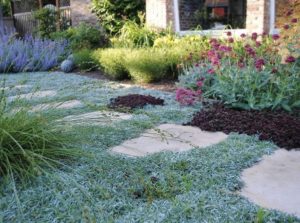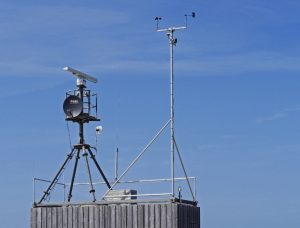As the scorching heat of summer sets in, maintaining a green commercial landscape becomes challenging. However, with the increasing emphasis on sustainability and environmental consciousness, landscape professionals, business owners, and property managers are seeking innovative techniques and equipment to nurture landscapes while minimizing their ecological footprint. This blog will explore a range of sustainable landscaping practices, equipment, and principles tailored for hot summer months. These eco-friendly solutions preserve the beauty of the surroundings and contribute to a greener and healthier planet.

Rainwater Harvesting and Greywater Recycling:
Water scarcity is a growing concern, especially during the hot summer months. Rainwater harvesting systems offer an effective way to collect and store rainwater, which can be later used for landscape irrigation. Additionally, repurposing greywater from buildings helps reduce the reliance on precious potable water, leading to significant water savings and promoting responsible water usage.

Drought-Resistant Turf Alternatives:
Traditional lawns can be water-intensive and challenging to maintain in the heat. Consider embracing drought-resistant turf alternatives, such as low-maintenance grass varieties and ground cover options. These resilient choices survive the summer heat and reduce water consumption, making them ideal for sustainable landscapes.

Automated Weather Monitoring:
Smart irrigation systems equipped with weather monitoring technology can revolutionize how landscapes are watered. By using real-time weather data, these systems adjust irrigation schedules, preventing overwatering during periods of rain and ensuring efficient water usage during dry spells. This conserves water and helps businesses cut down on water-related expenses.
Native Pollinator Gardens:
Creating biodiverse landscapes can have a profound impact on local ecosystems and biodiversity. Native pollinator gardens, with carefully selected plant species that support local bees, butterflies, and other pollinators, provide a haven for wildlife and enhance the landscape’s aesthetic appeal.
Efficient Landscape Design:
Strategic landscape design plays a crucial role in combating the summer heat. By incorporating shade-providing elements like trees, arbours, and pergolas and choosing lighter-coloured materials for hardscapes, we can reduce heat absorption and create more comfortable outdoor spaces. Improved airflow through thoughtful design also contributes to a cooler environment, benefiting both visitors and the surrounding buildings.
High-Efficiency Outdoor Lighting:
Switching to energy-efficient LED lighting and incorporating motion sensors for outdoor spaces can significantly reduce electricity consumption. Additionally, minimizing light pollution contributes to preserving the natural beauty of the night sky.
Composting and Organic Fertilizers:
Embrace composting as an eco-friendly way to recycle organic waste from landscape maintenance. By using compost and organic fertilizers, we nourish the soil, promote healthier plant growth, and avoid the environmental impacts associated with synthetic fertilizers.

Renewable Energy Integration:
For a truly sustainable landscape, consider incorporating renewable energy sources. Solar-powered irrigation systems and outdoor lighting are excellent examples of harnessing clean energy to decrease reliance on the grid and lower carbon footprints.
Integrated Pest Management (IPM):
Integrated Pest Management (IPM) employs various environmentally friendly strategies to control pests and weeds, minimizing the need for chemical pesticides. This approach ensures a healthier ecosystem while safeguarding human health and visitors’ well-being.
Educational Signage and Outreach:
Finally, education and outreach are crucial to fostering a culture of sustainability. Consider implementing informative signage that highlights the sustainable practices used in the landscape. Engaging with visitors, employees, and customers through educational programs encourages collective efforts toward a greener future.
Incorporating sustainable landscaping practices, equipment, and principles into commercial landscapes during the hot summer months not only helps preserve the beauty of the environment but also ensures that we are responsible stewards of our planet. By adopting innovative techniques, conserving water, integrating renewable energy, and promoting biodiversity, we can create green spaces that thrive sustainably, benefit local ecosystems, and inspire positive change within our communities. Let us embark on this journey toward a greener, more resilient future together.
